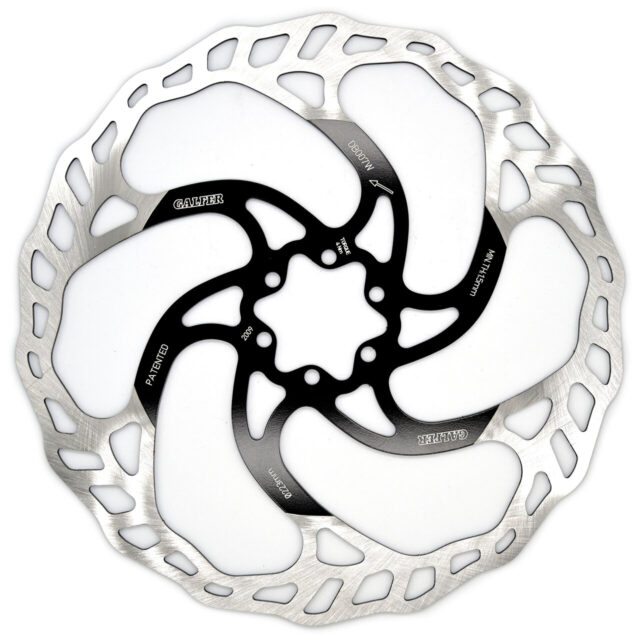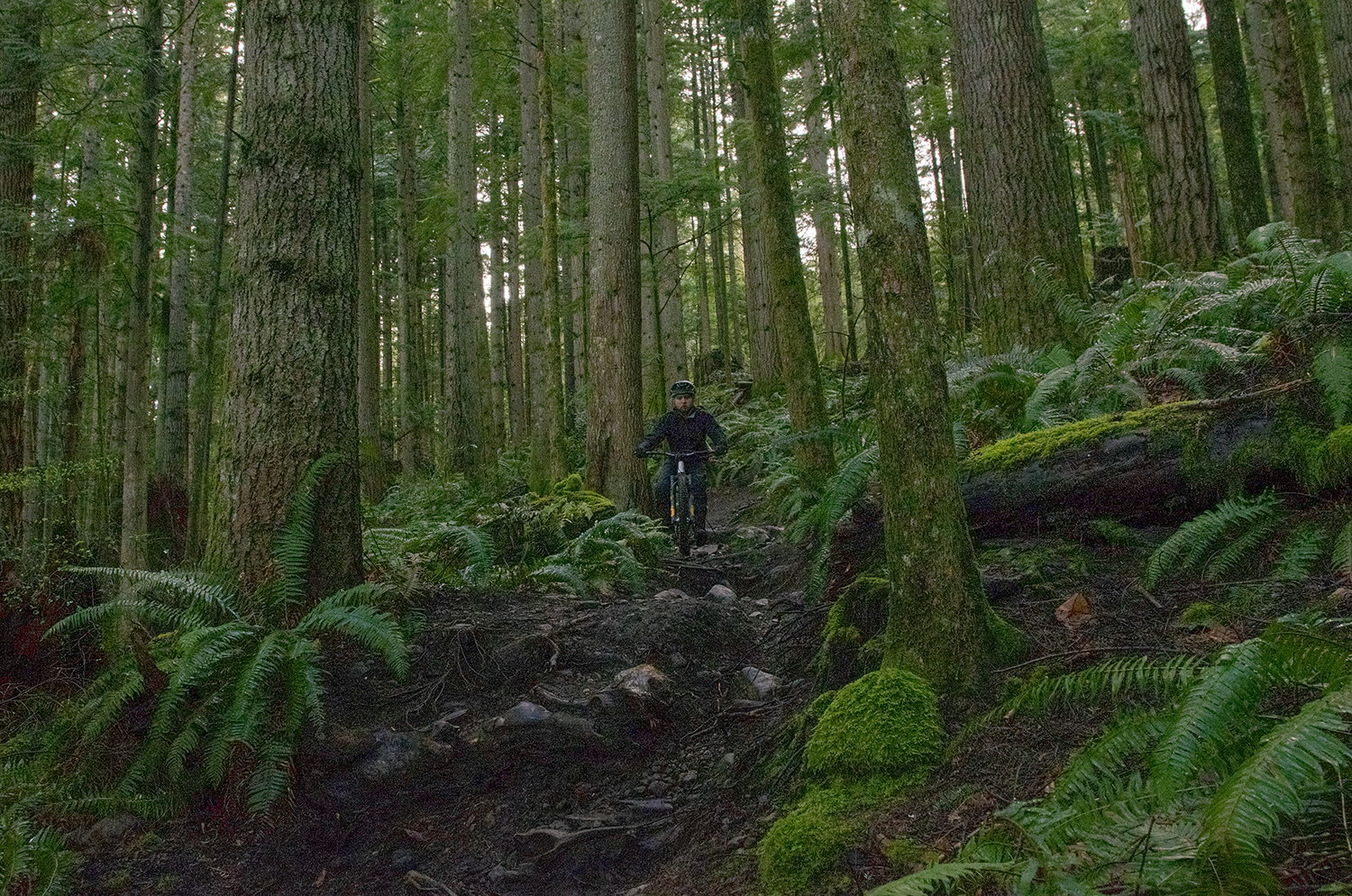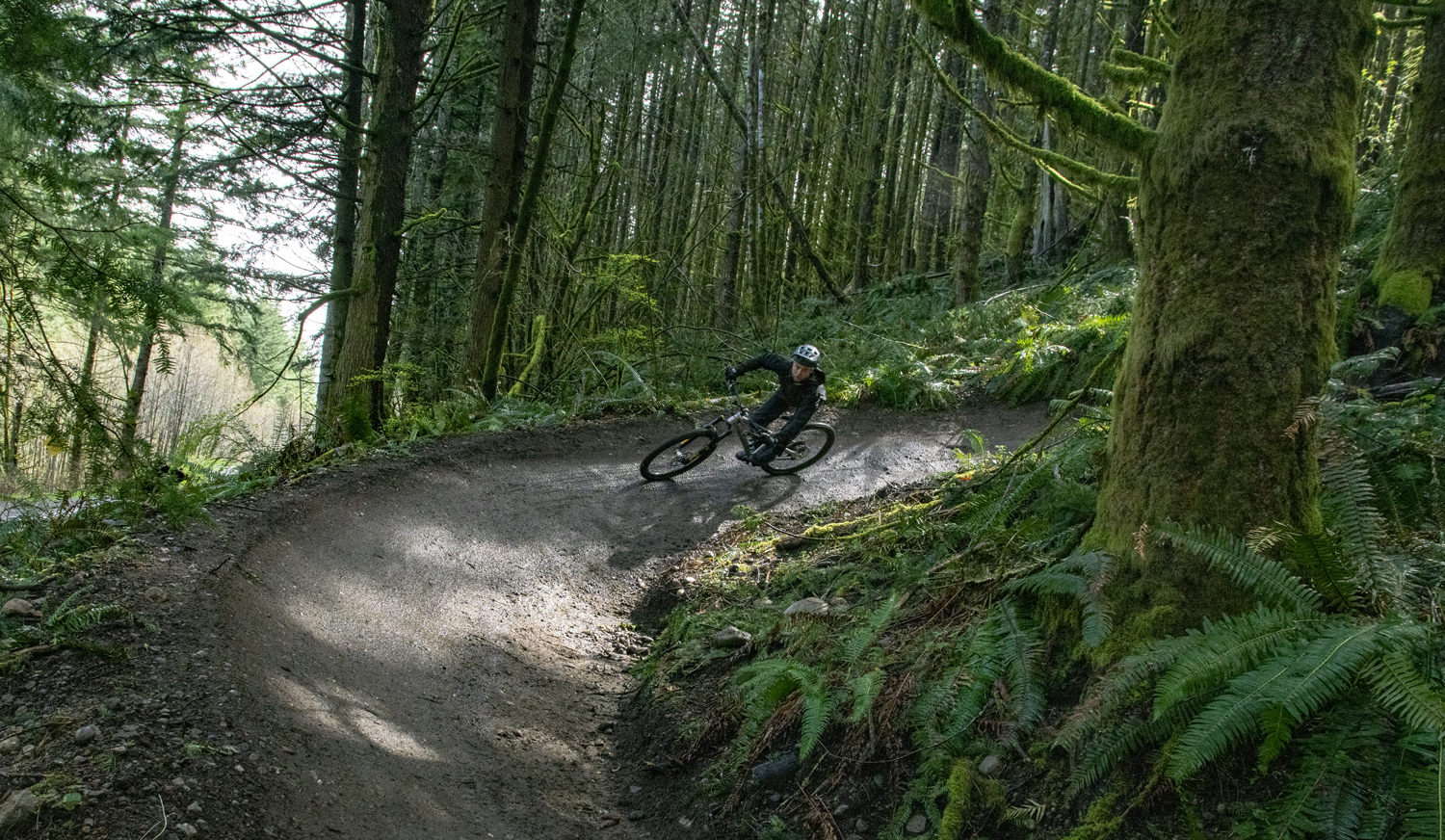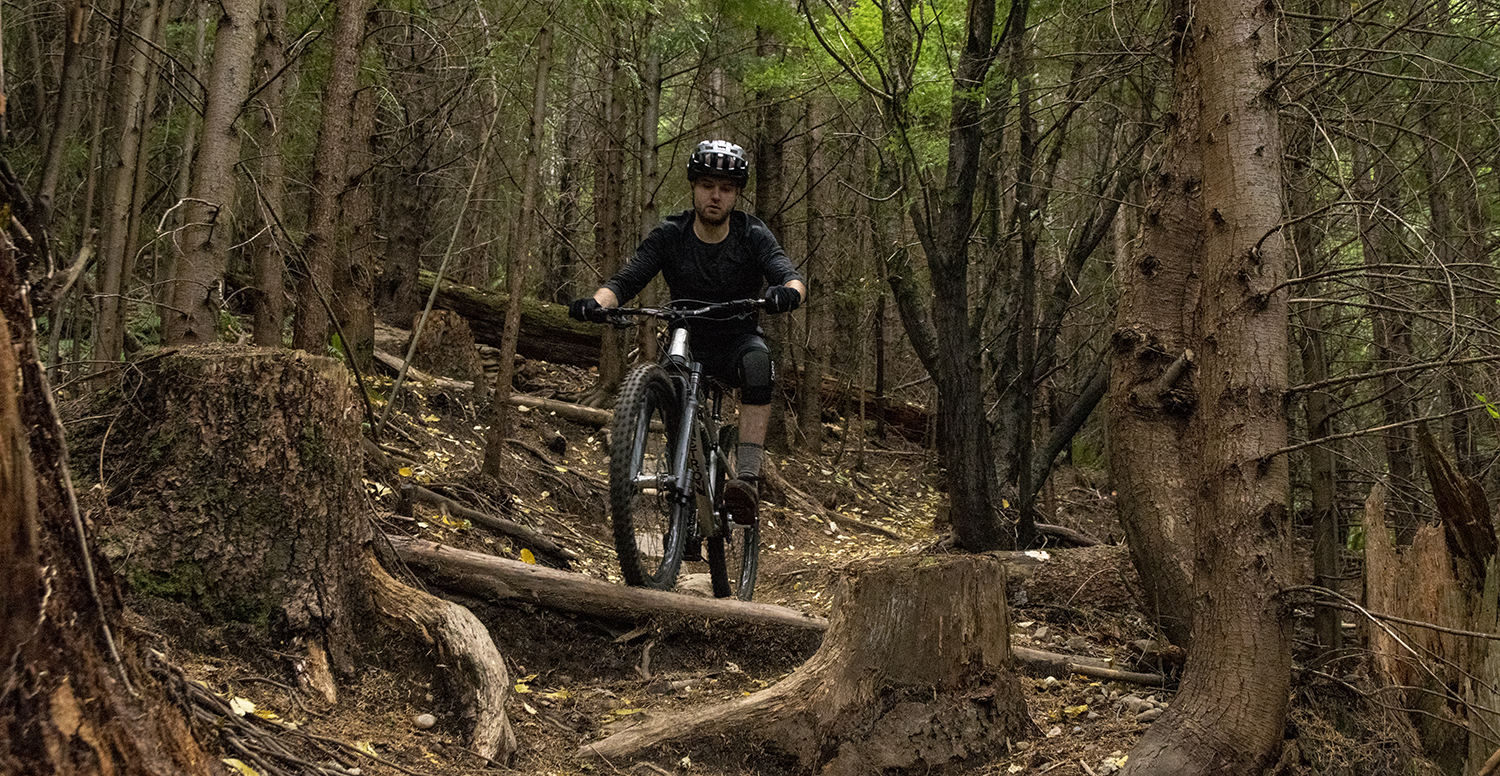Galfer Brake Pads and Rotors
Versions Tested:
- Standard pads, Hayes Dominion A4
- Pro pads, Hayes Dominion A4
- Wave Rotor, 223 mm x 2.0 mm
- Wave Rotor, 203 mm x 2.0 mm
MSRP:
- Standard pads: $17 per pair
- Pro pads: $31 per pair
- Rotors: $62 per rotor
Blister’s Measured Weight:
- 203 x 2.0 mm Wave Rotor: 165 g w/o bolts
- 223 x 2.0 mm Wave Rotor: 231 g w/o bolts
Bolted to: Nicolai G1, w/ Hayes Dominion A4 brakes
Reviewer: 6’, 170 lbs / 183 cm, 77.1 kg
Test Locations: Washington, Oregon
Test Duration: ~6 months

Intro
Mountain bike brake pads have typically been broken down as simply “metallic” and “organic” (otherwise known as “semi-metallic”) compounds. But as I discussed with Galfer’s Daryl Simmons back in Ep. 81 of Bikes & Big Ideas, that binary doesn’t come close to telling the whole story but instead has been a convenient shorthand for brake manufacturers to simplify how they talk about their pad offerings.
Galfer likes to look at things differently. Their pad offerings are all technically organic/semi-metallic compounds, but their performance characteristics vary substantially, both across their own lineup and relative to the OE options that a lot of riders are probably used to.
I’ve been testing Galfer’s Standard and Pro brake pads, along with their 203 and 223 mm rotors on the Hayes Dominion A4 — which is still my current favorite Enduro / DH brake — and have come away quite impressed. Galfer offers the Pro and Standard pads for most mountain bike brakes from recent memory, and in Road and E-Bike compounds (which we haven’t yet tested) in versions for a whole lot of brakes. Check out their site for the full rundown.
Galfer also makes rotors in both 6-bolt and Centerlock versions, all of which are laser cut from high-carbon 420 stainless steel, in their own factory in Spain. And it’s their spearheading of bigger rotor sizes for mountain bikes — up to a whopping 246 mm (6-bolt only) — that lead me to give their offerings a try. And I’m very glad that I did, because not only are bigger rotors a worthwhile investment for more aggressive riders, but I’ve also found my new favorite brake pads.

Rotors & Rotor Sizing
It’s not exactly a secret that bigger rotors offer more power than smaller ones — think about them as increasing the leverage that the brake has on the wheel if that helps visualize the change — and Galfer has been ahead of the curve in offering bigger rotors than many brake manufacturers for a while now. And the advent of bigger wheels for Enduro and Downhill bikes has helped drive the need for those bigger rotor options. Larger diameter wheels have the opposite effect of increasing rotor size when it comes to braking power. Again, think of it in terms of leverage: a bigger wheel has more leverage over a given rotor size than a smaller one. Bigger rotors are needed just to keep pace with bigger wheels.
Of course, heat management is a significant factor, too. In addition to increasing braking power, a bigger rotor (of an otherwise similar design, anyway) will also increase the amount of material in the rotor (so it will increase in temperature less dramatically for a given amount of heat put into it) and the surface area of the rotor (so it’s more able to dissipate heat to the surrounding air).
That’s also the thinking behind Galfer increasing the thickness of their larger sizes of rotors — more thickness means more material to absorb and dissipate heat. Their 160 mm Wave rotor comes in 1.8 mm thickness only; the 180 and 203 mm sizes come in both 1.8 and 2.0 mm thicknesses, and the 223 mm one is offered in 2.0 mm thickness, only. And finally, Galfer offers a monster 246 x 2.3 mm Wave rotor, too. That’s all for the six-bolt options — the Centerlock ones are available in 1.8 mm thickness and up to 203 mm diameter, only.
Bigger, thicker rotors also obviously weigh more. The 203 and 223 mm rotors I’ve been testing weigh 165 and 231 g, respectively, in the 2.0 mm thickness; for reference, a 203 x 1.8 mm Galfer Wave rotor weighs 153 g. Galfer also says that the increased thickness stiffens up the rotor, making it more resistant to warping, and harder to bend from an impact as well. That certainly checks out, though it is worth noting that thicker rotors (especially the 2.3mm thick 246 mm one) aren’t going to work with every brake out there. The pad clearance on the Dominion A4s is just barely enough to handle the 2.0 mm offerings with brand new pads — so keep that in mind before you immediately jump for the biggest option.

It was the option for bigger rotors that drew my attention to Galfer in the first place. The Hayes Dominion A4 is an excellent, powerful brake, but I’m still able to overheat them on the most demanding descents — my favorite local brake torture test drops almost 3,000 feet in just over two miles, and features few sections where you can’t fully let off the brakes for any kind of extended period. And if you’re riding that kind of terrain regularly, anything that’ll help keep your brakes cool can really help.
Adding brake power can help there, too — if you’re able to do your braking in stronger, shorter bursts and let off the brakes between them (even briefly), that slight respite gives the brakes a moment to cool, and can often keep things overall cooler than if you’re having to drag your brakes down more extended sections of trail to keep your speed in check.
But that increased heat capacity is a bit of a double-edged sword, depending on whether or not you’re riding terrain that really demands it. Brakes do work best when they’re in their ideal operating temperature range — and if you’re wildly over-braked, it’s absolutely possible to struggle to get the brakes up to temperature, too. And so, this is yet another case where it’s best to know thyself, and honestly assess if you’re overheating your brakes (bigger rotors will help), or will be better off staying a little more moderate in your sizing.
Daryl Simmons, of Galfer, also offered a really excellent insight on relative rotor sizing between the front and rear wheels when I spoke to him in Ep. 81 of Bikes & Big Ideas a few months back: pay attention to how quickly you’re wearing out brake pads on the two wheels. If you’re getting relatively even wear between the front and rear, that’s a good sign that you’ve got the balance between the two about right. If you’re going through pads on one end of the bike much more quickly than the other, increasing the rotor size there (relative to the other wheel) might be the way to go, or vice-versa, depending on your needs.
Running the front rotor one size larger than the rear (e.g., the 223 mm front / 203 mm rear combo tested here) tends to work well for me, personally, though running equal size rotors is also common. A larger rear rotor is a more unusual choice, but isn’t entirely unheard of — and in fact, World Cup Downhill racer Troy Brosnan has been known to go that route. So there’s no one-size-fits-all solution here, but it is worth doing a little experimenting to figure out what works for you.
So how about the Galfer rotors, specifically? In short, they’re very good. For my purposes, the 223 front / 203 mm rear rotor combination is a substantial upgrade over the 203 / 203 or 203 / 180 mm combos that Hayes offers, both in terms of outright power, and especially when it comes to heat management. The added weight, while non-zero, feels negligible on what is a fairly burly Enduro bike. And the Galfer Wave rotors have been quiet and stayed true in the six months-plus that I’ve been on them now. Saying that they haven’t given me any trouble might sound like faint praise, but what more do you really want from rotors? Galfer’s are high-quality, come in a big range of sizes, and are all made in their own factory in Spain. They’re absolutely a worthy replacement for any OE options out there, especially if you’re tempted to experiment with bigger sizes.

Standard Pads
Galfer says their Standard brake pads are meant for lighter-duty Trail use, but that probably sells them a bit short — they work well, especially given their modest price point ($17 MSRP). In terms of power, they’re a significant improvement over the Hayes semi-metallic stock pads, but a little short of the metallic version. They do make a little bit of noise in a lot of conditions — but it’s a soft grinding sort of sound like you’d get when using fine sandpaper on something, not any kind of loud howling or honking. They work fairly well in the wet, and while I have managed to get them to fade somewhat at very high temperatures, they haven’t fallen off as badly as either Hayes Semi-Metallic pads, or the Sintered full-metallics (once those are glazed over). And their durability is good, too — they’re a little softer wearing than the Hayes Sintered option, but last substantially longer than the Semi-Metallic stock pads.
And that’s a really solid combination of traits. Riders who are putting really heavy demands on their brakes will probably manage to overheat them from time to time, but they’re still better than most OE organic / semi-metallic options on that front (the Hayes ones certainly included), they do that while still being pretty durable, and they’re relatively affordable to boot.
Pro Pads
The Pro pads, though, are the real stars of the show. Their outright power is a substantial step up from both the Standard pads and most OE pads, and they feel like they have a somewhat bigger range of temperatures in which they perform well, especially at the hotter end.
In the typical metallic vs. organic paradigm when comparing OE brake pads, I generally have a strong preference for the metallic option. They tend to have a bit more power, much better wet-weather performance, and are often less prone to fading at higher temperatures (to a point). The downsides are that they’re often noisier, lack power before they’re up to temperature, and are more prone to glazing over and permanently losing power if they get very, very hot. Full metallic pads also tend to take longer to bed in and be more sensitive to proper bed-in procedures to work properly.
Now, to reiterate, characterizing brake pads simply as “organic” or “metallic” absolutely isn’t enough to definitively understand how they’re going to perform — and both the Galfer Standard and Pro pads are technically organic, A.K.A. semi-metallic formulations. But most of the major brake manufacturers offer two pad compounds that they categorize by that binary scheme, and the relative performance of the two does generally break down along those lines.
The Galfer Pro pads do a very impressive job of combining most of the best features of both. Their raw power is excellent, and that power is consistent at a huge range of temperatures. They work well when wet, are very difficult to glaze over, and do all that while being notably quiet. In particular, they’re remarkably effective when wet and a bit cold — which is a big deal in the PNW winter — but also perform well when quite hot, and I’ve been unable to glaze them significantly, despite my best efforts. They’re the final piece of the puzzle for making the Dominion A4 perfect, in my book — I like the brakes themselves a lot, but Hayes’ Semi-Metallic pads aren’t great in the wet, and the Sintered version glazes too easily and gets noisy when they’re hot. The performance of the Galfer Pro pads is substantially better than either. They’re also quick to bed in — a notable improvement over most metallic pads, which tend to be both slow to bed in and sensitive to a decent bed-in procedure in order to work to their full potential.
The catch, if you want to call it that, is price: the Pro pads cost nearly double what the Standard ones do (though they’re roughly in line with the OE pads for a lot of common brakes, Hayes included). And especially compared to the metallic pad offerings from most brake manufacturers, they are substantially less durable (at least in terms of wear — if you’re replacing metal pads regularly due to glazing, the Pros might actually be an improvement). But the performance benefits are not subtle. The combination of outright power, wet weather performance, and remarkable consistency across a big range of temperatures is very, very impressive.

Adapters
I’m also a big fan of Galfer’s brake adapters, simply because they use separate bolts to attach the adapter to the frame/fork, and the caliper to the adapter, even on the smaller +20 and +23 mm sizes. A lot of other brands’ smaller adapters (i.e., ones to go up one rotor size rather than multiple) use just two long bolts that go through both the caliper and adapter, with spherical washers to compensate for the fact that the bolts aren’t quite perpendicular to the mounting face of the caliper in such a design. That style adapter does work, but they’re much more prone to having the caliper move when tightening the bolts, making it harder to achieve perfect alignment. It’s a relatively small detail, but four-bolt adapters are a lot nicer to work with. Galfer isn’t the only brand to go that route, but that style is absolutely worth seeking out.
Unfortunately, Galfer’s +43 mm adapter (which I tried to use to put the 223 mm rotor on a fork with 180 mm post mount tabs) doesn’t clear the Dominion A4 caliper. I had to seek out a Hayes adapter for that application, but the Galfer +20 and +23 adapters work fine with the Dominion A4 caliper. And that’s more of a comment on the Dominion A4 caliper than the Galfer adapter — I had Shimano and SRAM adapters in that same size on hand, and those don’t work, either. It’s an especially bulky caliper, and I’d expect the Galfer adapter to work with most brakes out there.
Bottom Line
Galfer has a whole lot of experience making brake pads and rotors — it’s been their entire business since 1946 — and has led the charge on offering bigger rotors for mountain bikes. And especially as 29ers have become more common for Enduro and Downhill bikes, there’s a whole lot of value to having bigger options. I’m sold on a 223 mm front rotor for where and how I ride, and Galfer’s are a quality option. And though their brake pads are formulated a bit differently than a lot of folks might be used to, they’re also excellent.
The real bottom line is that once I wore out the test Pro pads, I spent my own money on a bunch more of them. If you’re not chasing every bit of braking performance you can get, the Standard pads are very good, less expensive, and last longer. But you can spend a whole lot more money to make much smaller gains in performance than what Galfer’s Pro pads offer, and they’re an extremely worthy upgrade for folks looking to eke a bit more performance out of their brakes, especially at high temperatures and / or in wet weather. They’re outstanding.

Looks like they offer the 223mm rotors only in 6-bolts, not CenterLock.
I am happy with my Magura MDR-P rotors for now, but I think I will give the Galfer Pro Pads a try! Thanks for the review!
Yep. Just tweaked the review to be more clear on that point.
Great review. Next time around, I’ll check out the standard pads. For now I’m set with a good selection of MTX Red Label Race pads. I’ve had good luck with these, but I don’t put my brakes through the heat cycles that you do.
The four-bolt adapters sound very intriguing. A link to some +20s would be great.
Thanks, Tom!
The +20 mm adapter is here: https://galferusa.com/bike/product/99091/sb002-20mm-bicycle-adapter-bracket-22-grams
Ordered. Thanks!
Do the standard pads glaze over? How did you bed them in and were they easy to do?
Hey David, do you feel the Galfer rotors are a worthwhile upgrade over the Hayes ones, even for the same size? Or were the majority of the benefits just from going up a rotor size? Specifically with regards to power and heat management.
If the Hayes ones are still in good shape, probably not. The Galfers are maybe a little quieter but I don’t think the performance difference is all that big comparing like to like sizes.
Thanks for another excellent review David.
This was timely, as our family of 4 just got 2 new bikes and moved 2 other bikes to new people, and swapped brakes on one, so it was time to reconsider everyone’s set up.
Living in the Midwest, most of the time, we don’t heat up brakes much, which is why it was so good you warned about running brakes too cold.
Especially for my 11 year old, who only weighs less than 100 lbs, she needs good braking power even at fairly low running temps.
But, some of our trail have very steep sections (especially in the bike park), and we travel to bike parks in the Rockies in summer.
At the same time, her G2 brakes are not super powerful, so for steep descents, I don’t want to go down to a 180mm front rotor, which would force her to squeeze to hard (29er front wheel).
Previously I had run Trickstuff Power pads in those brakes, when they were on my bike, but those are hard to get here, so I had set the bike up with SRAM sintered pads. I did worry that most of the time she would not get them up to good operating temps.
Then I remembered this review.
Pro pads to the rescue.
For compatibility with th rest of the bikes in the house, I wanted to try running a 180mm rotor on the rear of my bike, but worried (at 180 lbs), I might have heat or power issues on big mountain descents.
I can report that even with the small rotor (on a 29er wheel), with Code RSC brakes, I had suffiger power on the rear (but more would be nice), more importantly, no faint or bite point issues. And that included a trail that we only rode once, because it was boring, just a steep fall line descent of 900’ vert, with the brakes squeezed to the max of traction the entire way! Not even a bike length of side hill to open the brakes for a millisecond. Can’t think of a worse scenario for brakes!
Good to know for US readers: these are in stock at QBP, meaning pretty much any bike shop in the US can order them for you, without any shipping or other hassles.
Thanks for the feedback, and glad to hear that you’re impressed with them too!
David, one more question: what combination of adapters did you need to use in order to get the Dominion A4s working with the 223mm rotor on a 180PM fork? Hayes doesn’t seem to offer a +43mm adapter. Did you somehow stack the +23mm adapter on top of some generic PM spacers? Any tips appreciated, as I run Dominions and still occasionally cook my front rotor, so would like to try a 223.
Any chance you will be reviewing MTX pads anytime soon? I would be curious for a comparison between the Galfer pro pads and both the MTX red label and MTX gold label pads. I have tried the red label on my partner’s guide brakes and they are definitely a significant improvement to the feel and power of the brake. Excited to try some gold label pads to see if there will be even more power benefits.
Great review. I too would love to know how the Galfer pads compare to MTX pads.
I switched out the stock Code RSC pads for the Galfer Pros. Love them. Great stopping power and modulation in the wet and quiet. Thanks for leading me to these pads!
I third the MTX RED vs Galfer PRO comparison :)
me too on the comparison between Galfer Pro and MTX red, maybe even gold too.
NSMB gave the MTX red top marks – the big plus being modulation
Bit of a thread revival, but did you find the pro pads resulted in a softer bite point? I just installed them into my A4’s with Wave rotors and found the crisp defined bite point I had with the Hayes metallic pads to have morphed into a somewhat muddy but still discernible threshold.
David, they have expanded their line up, with the purple E-bike and red Advanced option.
I’m curious how those perform.
Time for a new test!
Hmmm, yeah, the Galfer USA site needs an update but they do have a bunch of new options up on the EU one. I’ll see what we can get going.